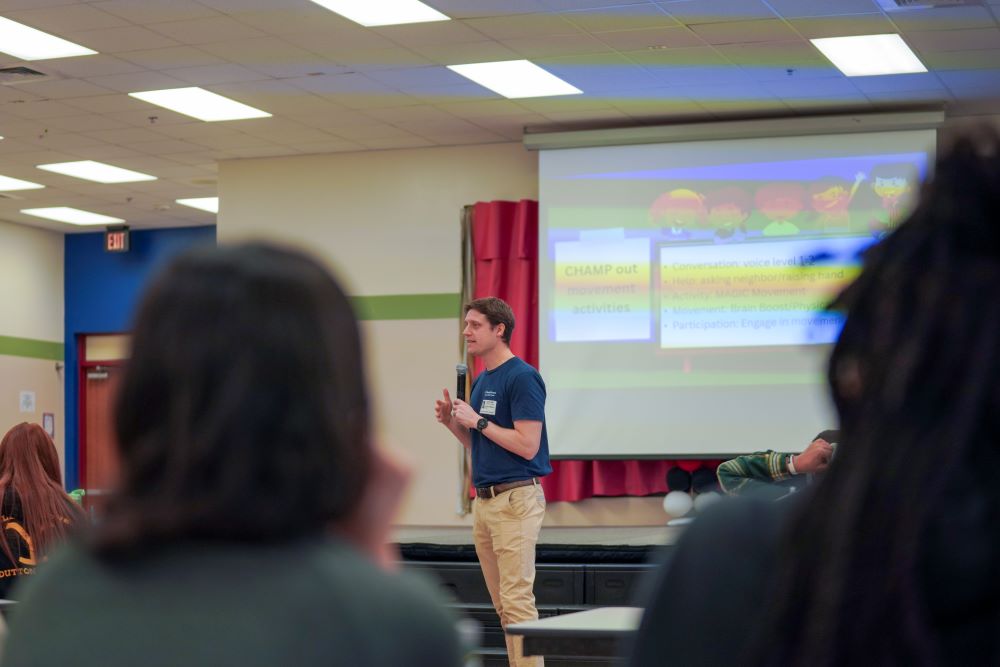UTHealth Houston School of Public Health research explores ways to support physical activity in classrooms
Published: January 11, 2024

Students across the United States are back in the classroom, and some may too be antsy to sit for long periods in their seats.
Timothy J. Walker, PhD, assistant professor of health promotion and behavioral sciences at UTHealth Houston School of Public Health, is leading implementation research on ways to support physical activity in the elementary school classroom.
Using a grant funded by the National Heart, Lung, and Blood Institute, part of the National Institutes of Health, he and his team are examining two evidence-based approaches: physical activity breaks, known as brain boosts; and physically active learning.
“We know students can lose focus when they spend considerable time in their seats,” he said. “When teachers provide movement opportunities in purposeful ways, students can benefit academically, socially, emotionally, and physically.”
The research will be done at two schools in the Spring Independent School District in Houston. 
“We want to help teachers provide movement opportunities in beneficial ways, so we are tracking both teachers’ use of the approaches and students’ physical activity levels,” Walker said. “Teachers will log the types of approaches they use, and 100 students at each school will wear an accelerometer for five days to assess their physical activity. The results will help us better understand if our implementation strategy is working.”
The exercises have been planned with fun in mind.
“Opportunities for movement can be simple,” he said. “For example, teachers can play a music video and have a guided dance routine. Or, they can add an academic component with games children can play.”
To learn about the solar system, one idea is for students to physically move around mimicking the planets, becoming more engaged in the learning. Students can learn about action verbs by acting out the definitions of different words.
Walker began working with elementary schools over 10 years ago by helping manage a study examining the benefits of brain boosts for students.
“We found brain boosts were an effective way to improve student physical activity levels,” he said. “I also saw the challenges teachers faced when implementing them, and this stimulated my interest in implementation research to make the use of brain boosts and physically active learning easier for teachers and schools.”
Lori Carroll, health and physical education coordinator for the Spring Independent School District, said that integrating movement into the academic classroom can have positive benefits for students and teachers.
“Teachers have challenging jobs, and we want to make it easier to support physical activity in schools and promote more engaged learning,” Walker said. “Some teachers already use some of these approaches and appreciate the benefits.”
Walker said they plan to do training sessions with staff throughout the year and hope to have early results of the study next spring.
“We ask a lot of our teachers and our students, and we are excited to see the potential of a positive impact on students and schools with this research,” he said.
